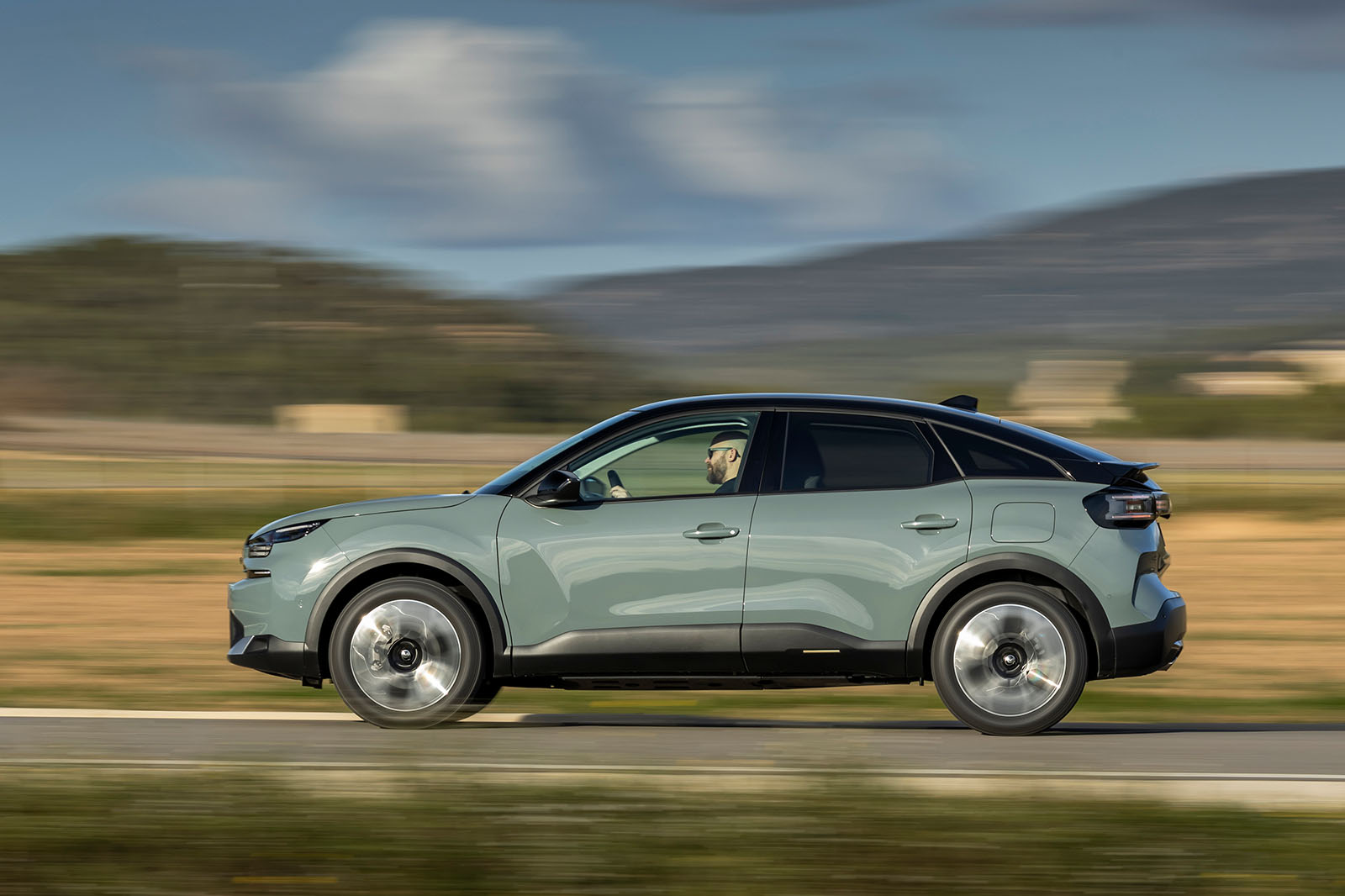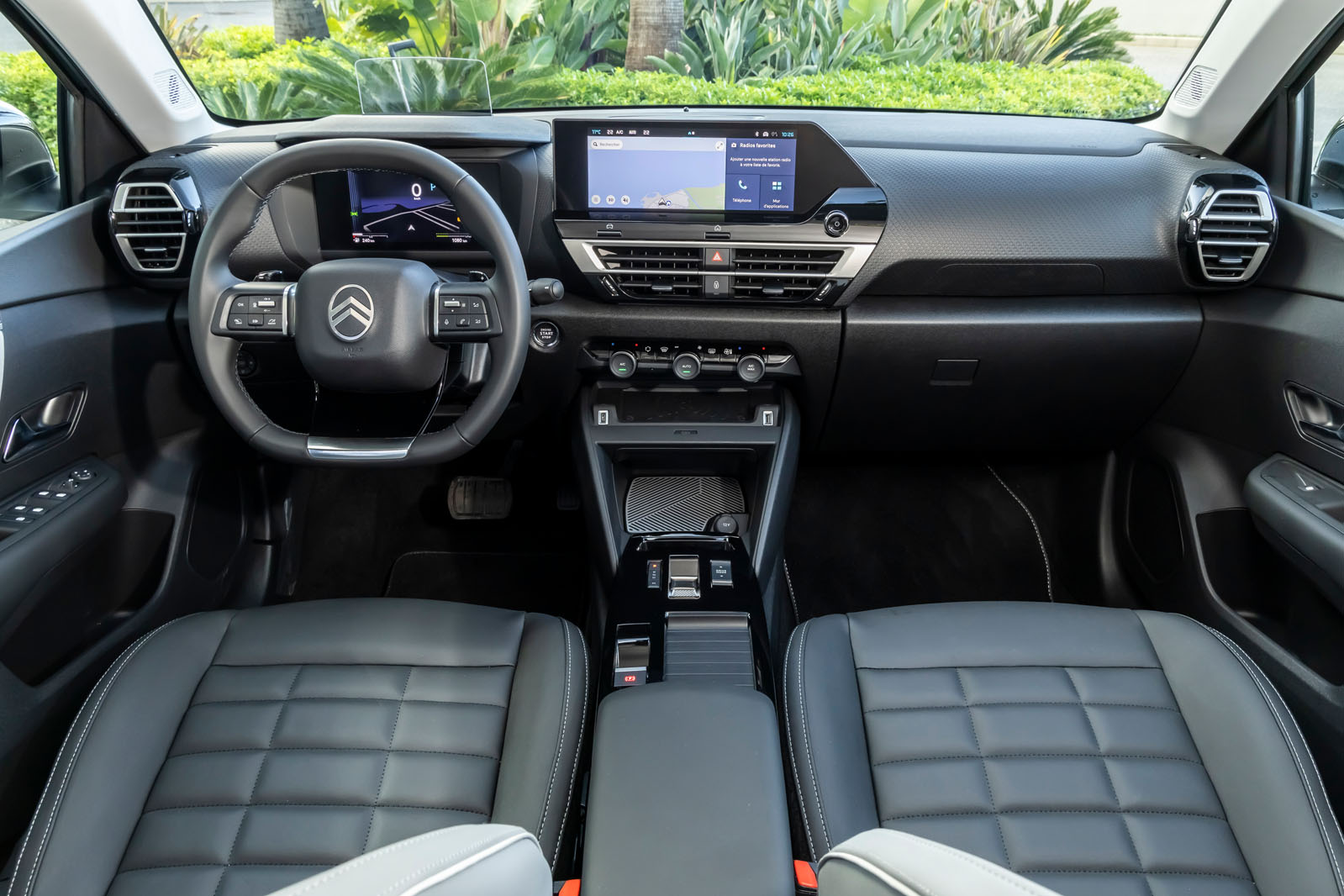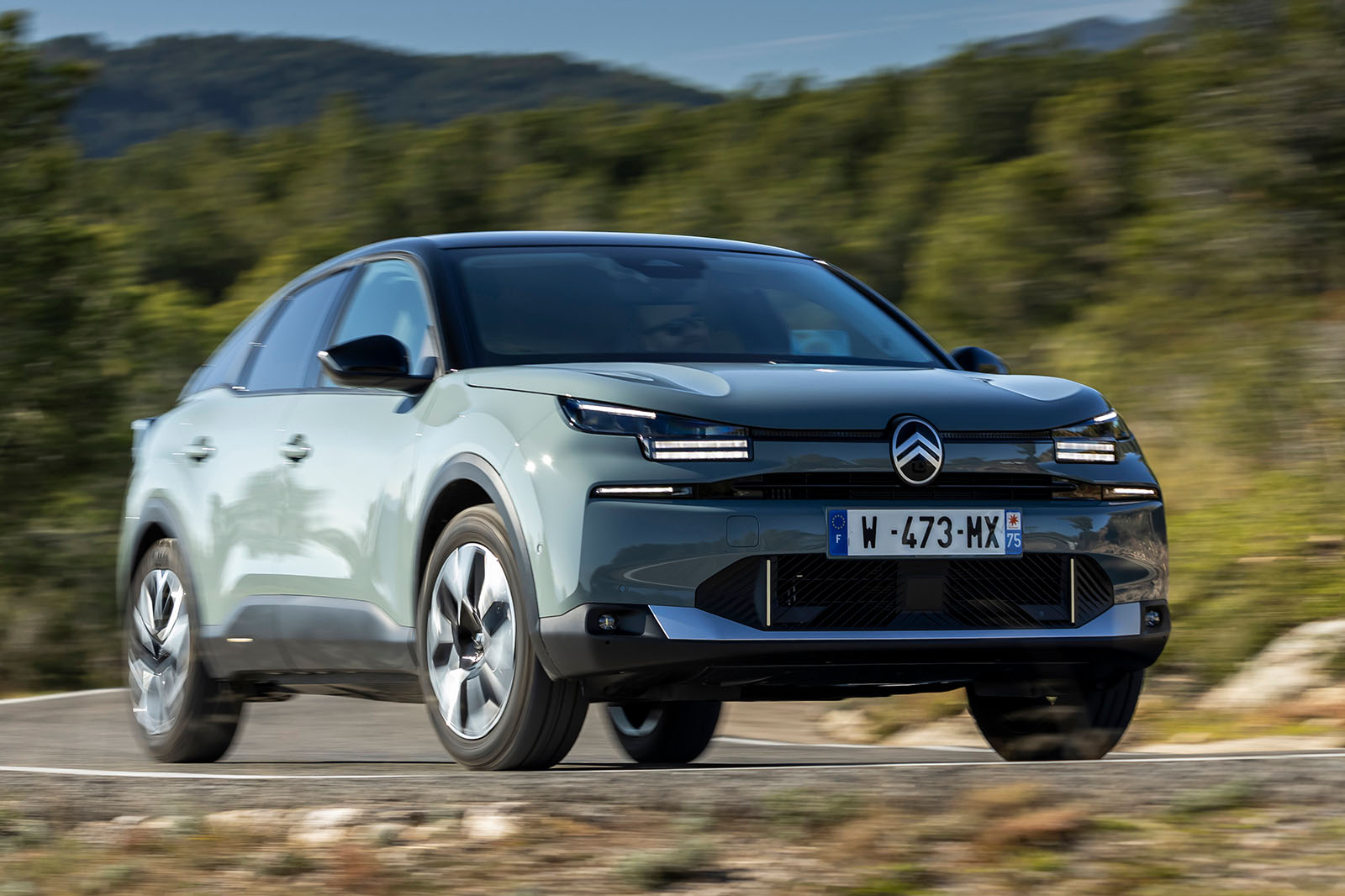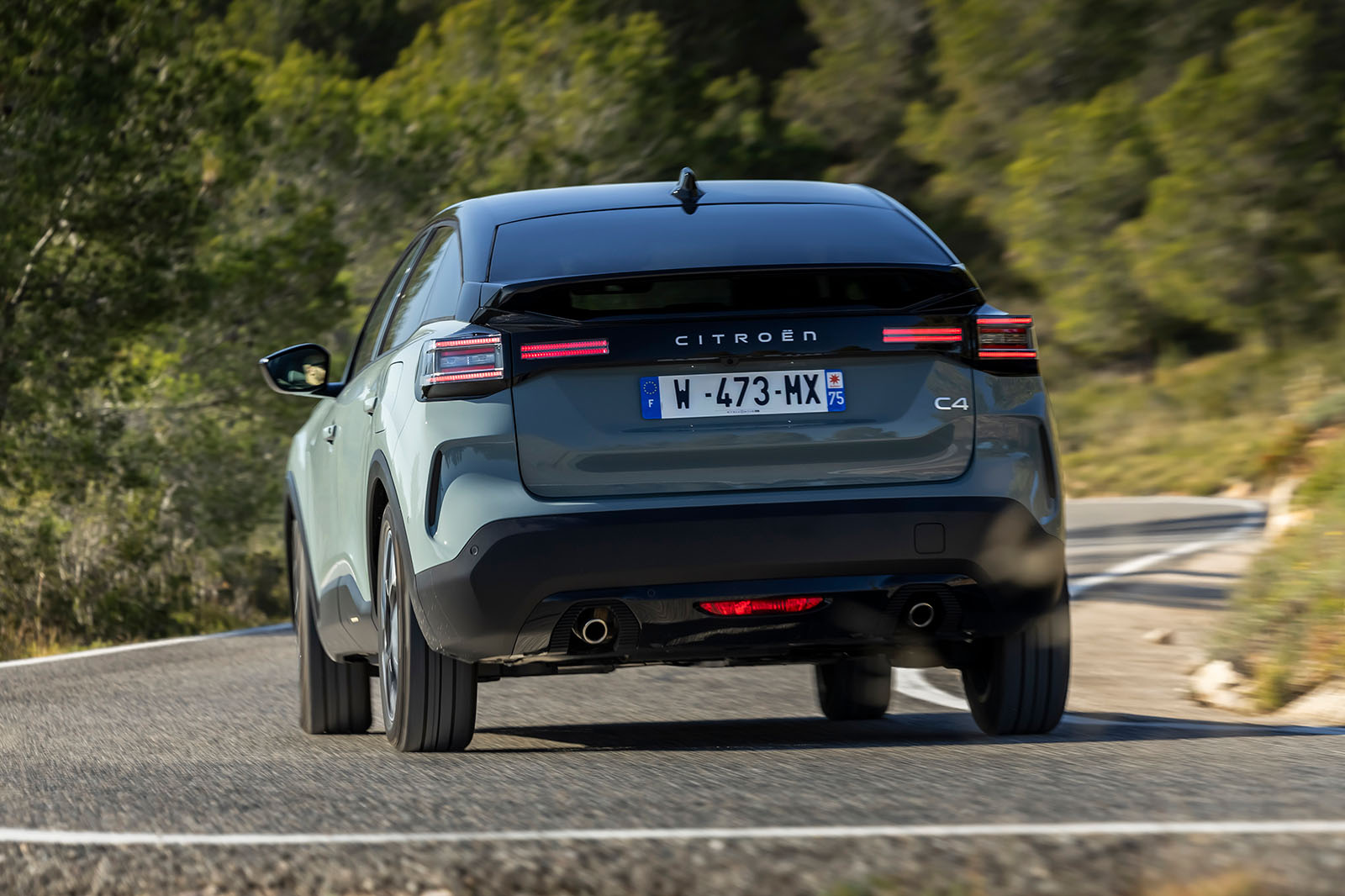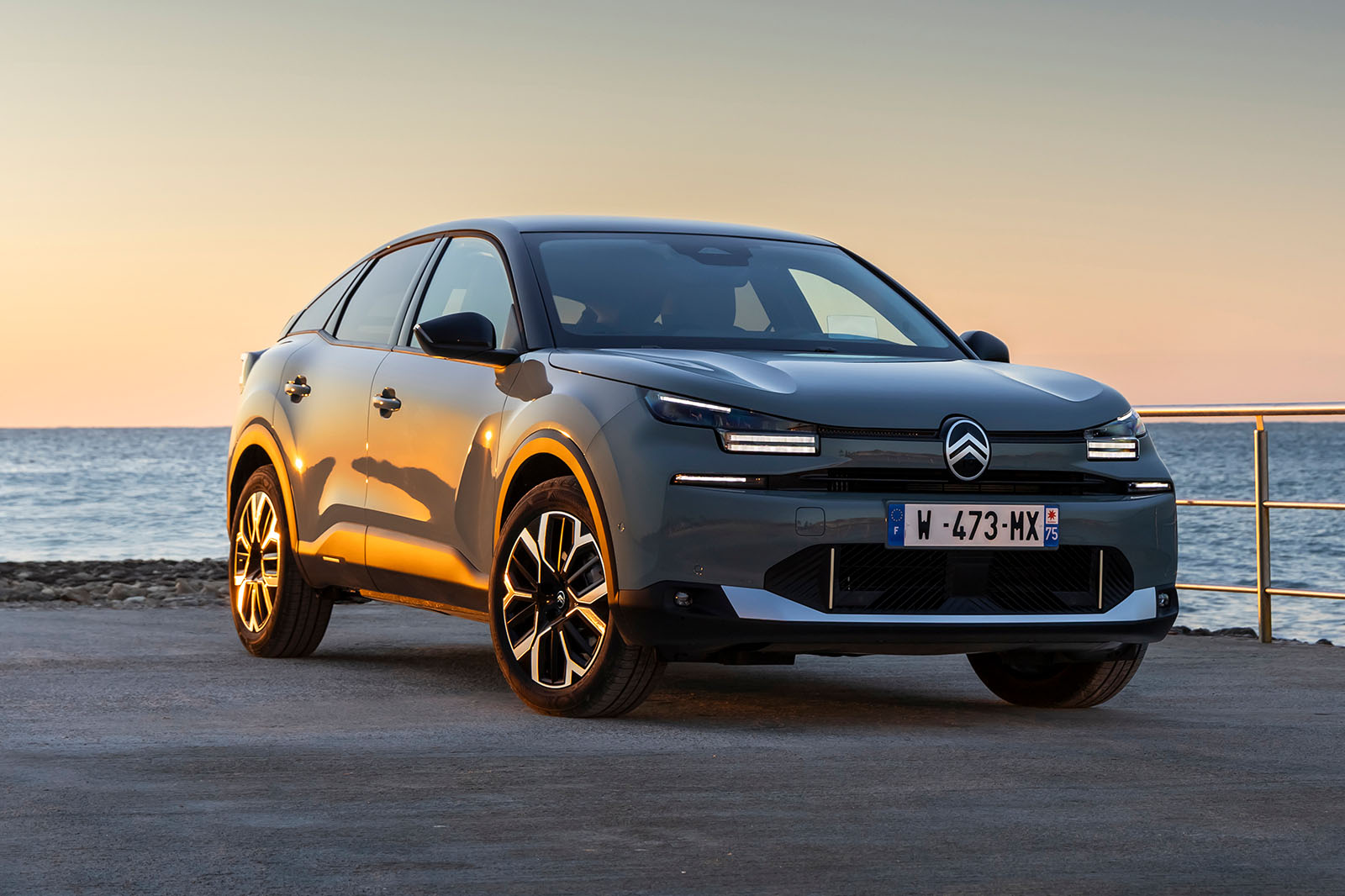Citroën’s comfort-led positioning of this car makes for a medium-high driving position, something that sits – like the car itself – between hatch and SUV. For some, that will make it too low, for others too high.
For the facelift, Citroën has fitted new 'Advance Comfort' seats in the C4, which are visually bulging with padding – 15% more than the slightly flat but broad seats they replace. Leclercq says they are intended to show comfort as well as providing it.
We will describe how they feel on the move shortly, but the first impressions are that they feel largely similar to the seats they replace. Yes, they definitely offer more lateral support and comfort than before and, say, the similarly priced and positioned Kia Stonic or Skoda Kamiq. But the extra padding can be a tad hard in the upper back area – and it's not adjustable – and there is a lack of under-thigh support. The seat itself is adjusted manually, which means that finding the right seating position is harder than it might otherwise be, but then this is one area that allows Citroën to keep prices down. Heated seats are offered in Max trim only.
Available space around the driver is about average. Citroën claims class-leading rear knee room, but we suspect this must be qualified by the front seats being slid all the way forwards because, with the driver’s seat set for a typical adult, second-row accommodation levels are only average, as is rear head room.
Boot space below the parcel shelf is 380 litres, another quite average showing. This is, of course, a pretty compact car for the European C-segment, but it’s unlikely to be one you’ll be drawn to for its practicality.
The instrument and infotainment layout is unconventional, but it doesn’t lack clarity and it isn’t made hard to interact with. Ahead of the driver is a now updated 7in digital instrument screen that provides a very simple digital speedometer but little else at much scale. In 2025, the screen also feels old and outdated compared with rivals.
Our test car’s head-up display, projected on a separate transparent pop-up screen (which was quite large) rather than the windscreen, adds some useful extra information, but options to configure both displays are limited. The ability to change the position of the head-up display using easy-to-reach controls next to the driver was a nice touch.
The cabin is centred around the same 10in infotainment system – now with updated software as part of the facelift – above two physical controls for Home and Vehicle and a volume knob to aid usability. There are also tactile and materially appealing physical controls for heating and ventilation.
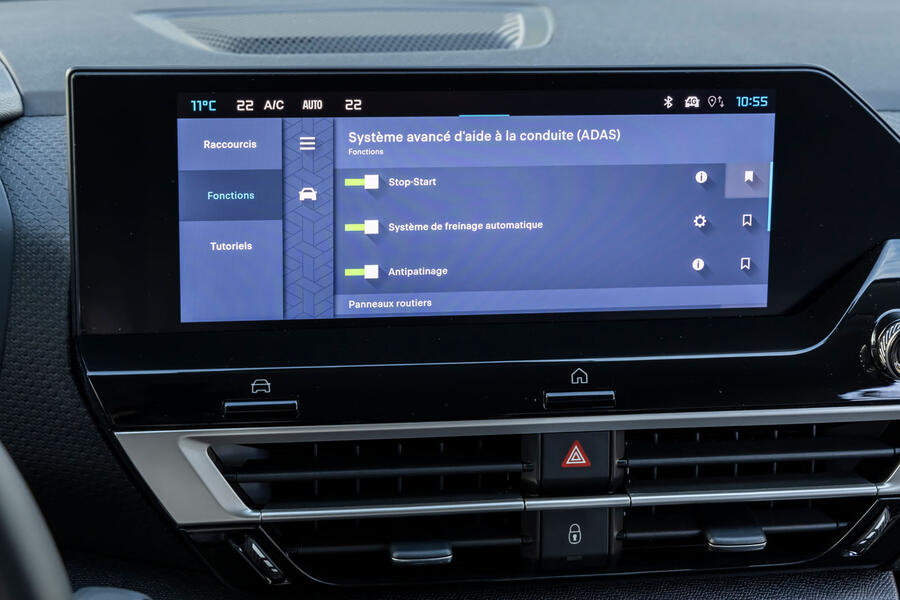
The infotainment itself, while running updated Stellantis software, is a tad sluggish and faffy to use. While it offers some large icons at surface level, a deeper delve into the system requires more tuned touches, which means more time looking at the screen while driving. It does offer wireless smartphone mirroring, plus wireless, USB-A and USB-C charging capabilities.
The factory navigation mapping is simple but clear, its directions are easy to follow and you can set destinations in spoken commands at the first time of asking.
The standard of material fit and finish is a bit mixed and the cabin isn’t free from harder, rougher mouldings in easy-to-reach places. Our top-rung test car’s cabin offered a pleasant aesthetic on the surface, with its plush-looking seats, but in reality it was quite a dull affair, with everything ahead of the front occupants being black or dark grey. The extensive use of gloss black plastic, as is the case across the Stellantis range – especially Peugeots – highlights fingerprints and makes a clean cabin look dirty very quickly and easily


















































